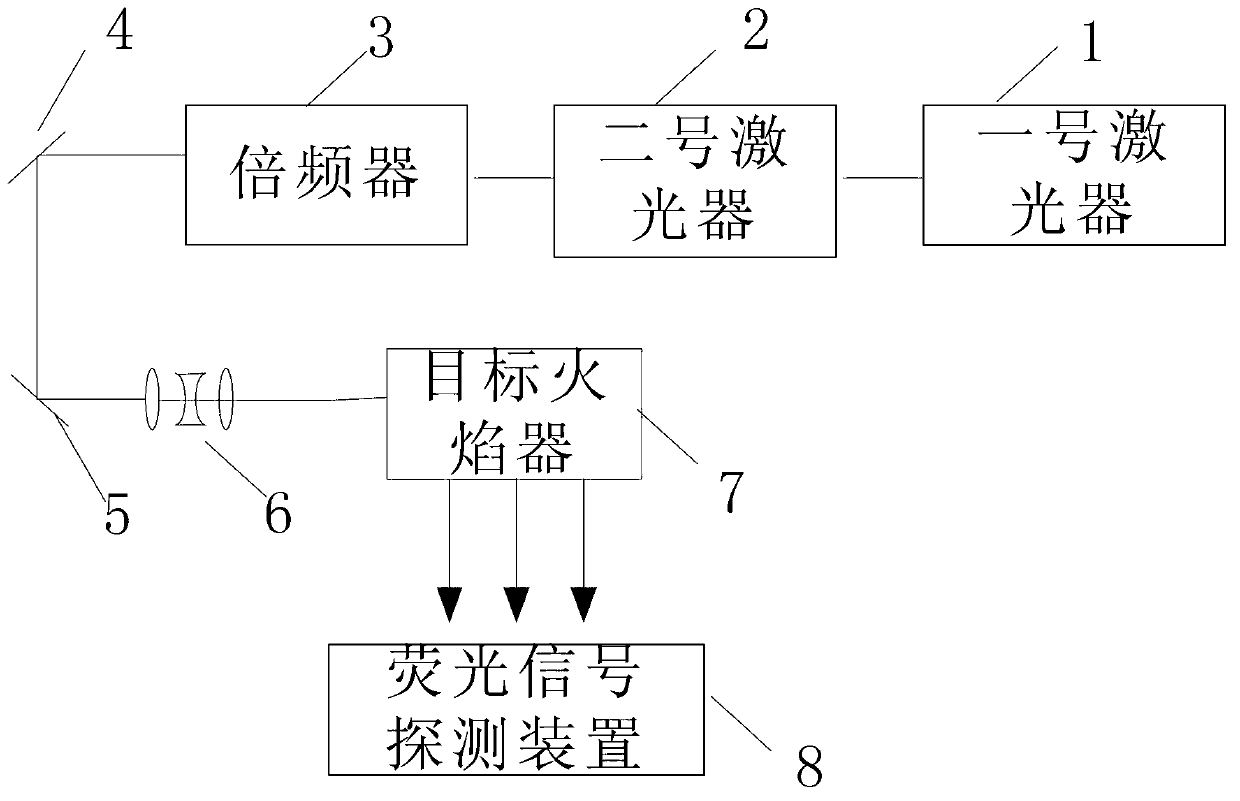Planar laser induced fluorescence (PLIF) imaging device and method for acquiring hydroxyl (OH) concentration spatial distribution through device
A planar laser induction and fluorescence imaging technology, which is applied in the direction of fluorescence/phosphorescence, material excitation analysis, etc., can solve the problems of uncertain concentration spatial distribution, etc., and achieve the effect of improved accuracy and simple process
- Summary
- Abstract
- Description
- Claims
- Application Information
AI Technical Summary
Problems solved by technology
Method used
Image
Examples
specific Embodiment approach 1
[0026] Specific implementation mode one, combination figure 1 To explain this embodiment, the planar laser-induced fluorescence imaging device described in this embodiment includes the first laser 1, the second laser 2, the frequency doubler 3, the first flat mirror 4, and the second flat mirror 5 , Sheet light shaping system 6, target flame device 7 and fluorescence signal detection device 8. The light beam emitted by the first laser 1 is incident on the optical signal input end of the second laser 2, and the beam pumped by the second laser 2 is input to the multiplier The laser signal input end of the frequency converter 3 is amplified by the frequency multiplier 3 and reflected by the No. 1 flat mirror 4 to the No. 2 flat mirror 5, and the reflected beam reflected by the No. 2 flat mirror 5 is incident on the sheet The light shaping system 6, the sheet light beam obtained after shaping by the sheet light shaping system 6 is input to the target flamer 7;
[0027] The fluorescen...
specific Embodiment approach 2
[0028] Embodiment 2 This embodiment is a further description of the planar laser-induced fluorescence imaging device described in Embodiment 1. The sheet light shaping system 6 uses CH 4 / O 2 / N 2 Laminar flow premixed Bunsen flame lamp, and the stoichiometric ratio Φ=1.0.
specific Embodiment approach 3
[0029] Specific embodiment 3. The embodiment is a further description of the planar laser-induced fluorescence imaging device described in specific embodiment 1, and the first laser 1 adopts an Nd:YAG laser.
PUM
| Property | Measurement | Unit |
|---|---|---|
| wavelength | aaaaa | aaaaa |
Abstract
Description
Claims
Application Information
 Login to View More
Login to View More - R&D
- Intellectual Property
- Life Sciences
- Materials
- Tech Scout
- Unparalleled Data Quality
- Higher Quality Content
- 60% Fewer Hallucinations
Browse by: Latest US Patents, China's latest patents, Technical Efficacy Thesaurus, Application Domain, Technology Topic, Popular Technical Reports.
© 2025 PatSnap. All rights reserved.Legal|Privacy policy|Modern Slavery Act Transparency Statement|Sitemap|About US| Contact US: help@patsnap.com



